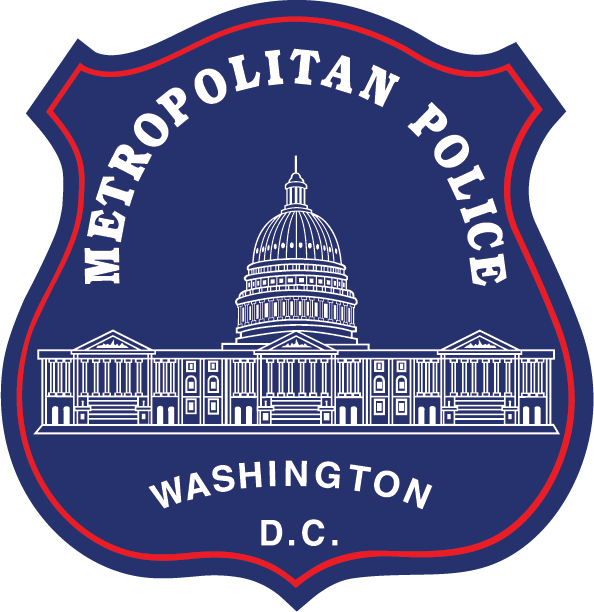 Members of the Metropolitan Police Department (MPD) have been serving the District of Columbia for over 150 years. During that time, the MPD has grown in diversity as well as size. For a short overview of the history of our department and to learn about how we've grown, view the information below.
Members of the Metropolitan Police Department (MPD) have been serving the District of Columbia for over 150 years. During that time, the MPD has grown in diversity as well as size. For a short overview of the history of our department and to learn about how we've grown, view the information below.
The Early Years
In 1790, Maryland and Virginia ceded portions of their territory for the purpose of establishing the Federal City. For the next 10 years, the Federal City was policed by constables appointed by these two states. In 1802, when the original charter of Washington was approved, police authority was centralized and power was granted to the city itself to establish patrols, impose fines, and establish inspection and licensing procedures. Until the creation of the Metropolitan Police Department in 1861, the city had only an auxiliary watch with one captain and 15 policemen.
In 1861, President Abraham Lincoln took personal interest in founding a regular police department for the District of Columbia. It was a time of constant danger in the Nation's Capital. With the beginning of the Civil War, an army was billeted in the city, government employees were increased by ten-fold, and hordes of unsavory elements descended upon the District's few square miles. President Lincoln personally dispatched an emissary from the newly created Board of Metropolitan Police Commissioners to New York City to become familiar with that system, which itself was based on the world-acclaimed Metropolitan London Police Department.
The ideas and knowledge gained from this study led to the creation of the Metropolitan Police Department on August 6, 1861. In September of that year, attorney William B. Webb was appointed the first Superintendent of the Police, with an authorized force of 10 sergeants and a number of patrolmen as needed, but not to exceed 150. Up to 10 precincts were authorized. The Superintendent of Police was paid $1,500 annually, with sergeants earning $600 and patrolmen $480.
The sergeants and most of the personnel for two precincts were sworn in that September. Officers had to be US citizens, able to read and write the English language, have been DC residents for two years, never convicted of a crime, between 25 and 45 years of age, and at least five feet, six inches tall. The men went to work right away in 12-hour shifts, seven days a week with no days off and no vacations. They were issued neither equipment nor badges, and they had to obtain their own handguns. The first arrest made by a Metropolitan Police officer was on a charge of intoxication.
Change and Growth
From that modest beginning, the Metropolitan Police Department grew in size, function, and professionalism in the Nation's Capital. In 1881, the first women were appointed to serve as matrons, and in 1918, three policewomen were recruited to form the nucleus of the Women's Bureau. The Women's Bureau handled all matters pertaining to female adults and juveniles coming into official contact with the police. Policewomen investigated causes of delinquency and recommended solutions using either legal action or social treatment. In 1919, the forerunner of the Training Division was begun as the "School of Instruction" on the third floor of the 7th Precinct. Each group of 22 officers took a 30-day course in the fundamental duties of police officers, the law of arrest, and court procedures. In 1930, a training school was established, expanding the course to three months and bringing in outside experts from various fields.
Unique National Role
Because of its presence in the federal city, the Metropolitan Police Department has played a unique role in history-making events of our nation. In 1865, when President Lincoln was assassinated, the young MPD assisted the War Department's intensive investigations to locate the assassin, John Wilkes Booth. In 1881, our police were again involved in national tragedy when President James A. Garfield was shot at the Baltimore and Potomac Railroad Depot on B Street. An MPD private seized the assassin before he escaped from the scene. Attempts on the lives of Presidents Harry S. Truman and Ronald Reagan, and then Council Member (and future mayor) Marion S. Barry Jr., have very much involved our Department. Tragic events such as the assassinations of President John F. Kennedy, his brother Robert F. Kennedy, and Martin Luther King Jr. —as well as happier events such as the many presidential, mayoral, and Council inaugurations, and national parades and marches—have made the MPD experts in crowd management and in providing assured, professional service.
The MPD of Today
Today the Metropolitan Police include more than 3,400 sworn members and more than 600 civilian employees. Today’s MPD is committed to the proud ideals and traditions of the department in its earlier years. While serving and protecting the community remains central to the MPD mission, the department is also committed to building safe and healthier neighborhoods in partnership with the community.
The MPD remains a remarkably diverse department. Nearly one in four of all sworn officers is a woman, placing the MPD among the national leaders in this regard. Approximately 70 percent of the MPD's sworn members are black, Hispanic or Asian, meaning that the department closely mirrors the makeup of the resident population it serves. As the Metropolitan Police Department strives to maintain its rich diversity, the department has also raised its hiring standards and taken other steps to enhance the professionalism of the force.
